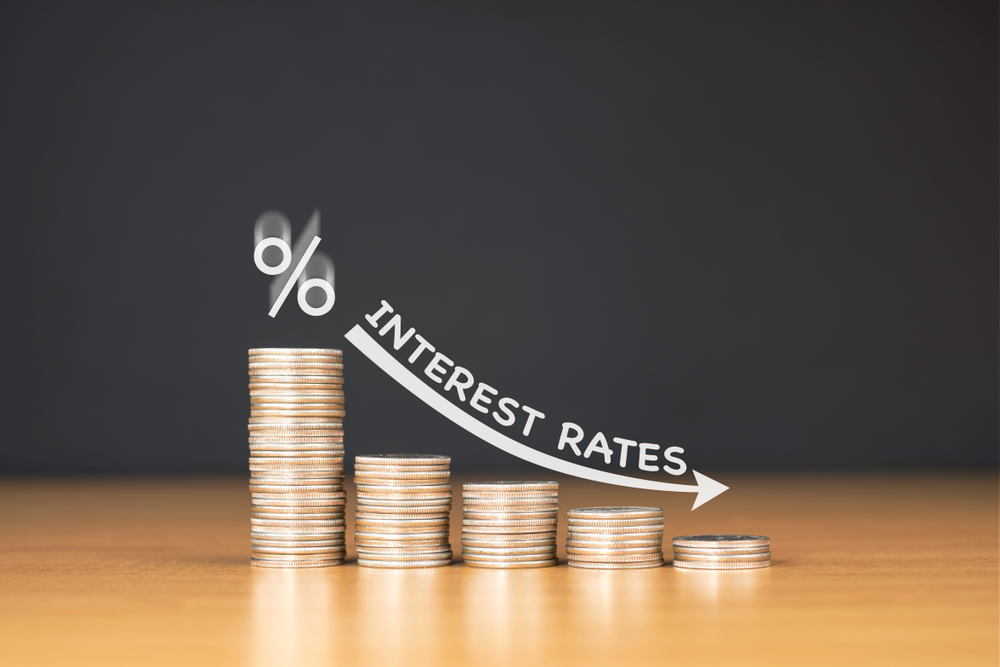The Federal Reserve cut its benchmark interest rate for the third straight meeting and signaled it may pause before further changes to monetary policy to see whether these easing steps are enough to sustain the economic expansion.
At the policy meeting on Wednesday, officials said they would lower the federal-funds target rate by a quarter percentage point, to between 1.5%-1.75%.
In taking this action, the Fed cited “the implications of global developments for the economic outlook as well as muted inflation pressures.” In essence, these rate cuts are insurance against a recession.
Fed Chairman Jerome Powell said policy would remain steady as long as “incoming information about the economy was broadly consistent” with the Fed’s forecast of moderate economy growth, a strong labor market and inflation near the 2% target.
“We believe monetary policy is in a good place to achieve these outcomes,” Powell said.
“We see the current stance of policy as likely to remain appropriate as long as incoming information about the economy remains broadly consistent with our outlook.”
What might cause the Fed to cut more?
Powell said the Fed would respond to “any development that cause a material reassessment of our outlook.”
“Looking ahead, we will be monitoring the effects of our policy actions, along with other information bearing on the outlook, as we assess the appropriate path of the target range for the fed funds rate,” he said. “Of course, if developments emerge that cause a material reassessment of our outlook, we would respond accordingly. Policy is not on a preset course.”
Economists think the Fed will now refrain from cutting rates again at its next policy meeting in mid-December, but many see the central bank easing in 2020 because they expect the economy to slow down.
“Our own view is that several further easing moves are likely over the course of next year,” said Josh Shapiro, chief U.S. economist at MFR Inc., in a note to clients.
The most important part of the Fed’s statement was what the central bankers didn’t say.
Policy makers removed language in place since the summer promising the Fed would “act as appropriate” to sustain the expansion which had been a signal that monetary policy easing was in train. The Fed had used that phrasing with each of its June, July and September statements.
Read: Live blog of Fed decision and Powell presser
By taking away the “act as appropriate” language, the Fed is trying to guide the market not to expect more cuts for now.
Boston Fed President Eric Rosengren and Kansas City Fed President Esther George both dissented. They have voted against all three rate cuts and argued that easing was unnecessary until more signs of economic weakness were evident. Cutting rates now would give the Fed less ammunition to combat a downturn in the future and might foster financial imbalances, they warned
Powell was upbeat about the outlook, saying that consumers have been resilient. Things look brighter than in late September, he said.
“We also see the risks to the outlook as perhaps having moved in a positive direction…although some things remain to be seen,” Powell said.
The chairman said he was referring to potential improvement in the trade war with China and reduced prospects of a no-deal Brexit.
The government reported earlier Wednesday that third-quarter GDP growth rose at a better-than-expected 1.9% annual rate.
Before the statement, the market had priced in a 30% chance of a rate cut in December, with stronger odds priced in for one cut by spring.
U.S. Treasury yields fell after the Fed decision. The yield on the 10-year Treasury note TMUBMUSD10Y, -3.50% fell 3.3 basis points, its biggest drop since the beginning of the month.
Stocks reacted positively to the Fed’s policy stance. The Dow Jones Industrial Average DJIA, +0.43% was up over 100 points and the S&P 500 index SPX, +0.33% was up 8 points.









